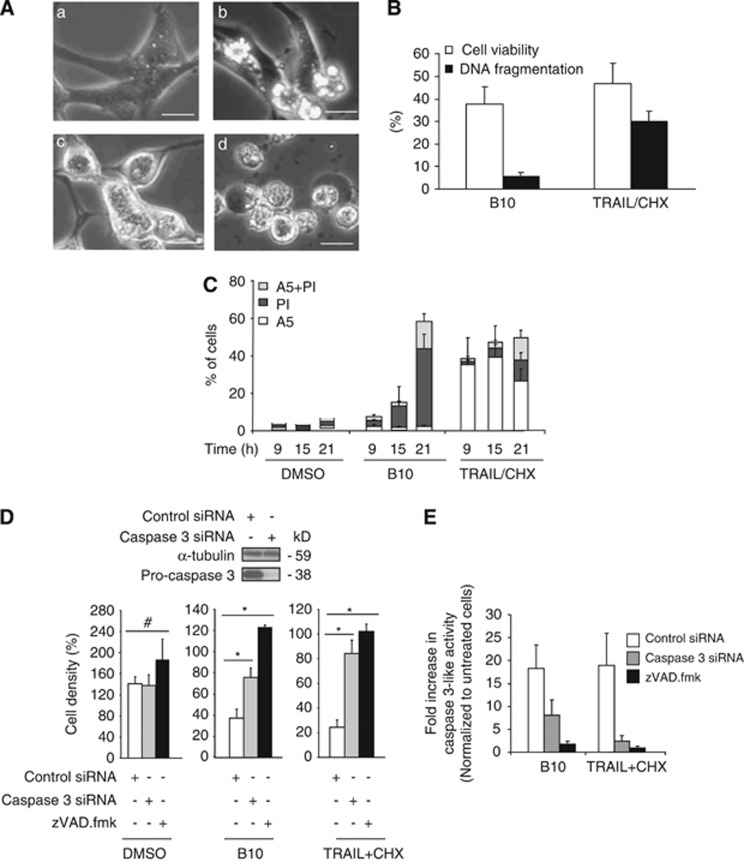Figure 1.
B10-induced cell death is partially apoptotic. (A) Morphological alterations of B10-treated U87MG cells were analyzed using microscopy. Representative pictures of the cell death phenotype of untreated cells (a), cells treated with TRAIL (20 ng/ml) and CHX (1 μg/ml) (b) or cells exposed to B10 (18 μM) for 9 h (c) or 21 h (d) are shown (scale bar: 30 μm). The combination treatment with TRAIL and CHX was used as a positive control for apoptotic morphology. (B) U87MG cells treated with B10 (18 μM) or TRAIL/CHX were analyzed for loss of cell viability by determining cell density via crystal violet staining, and DNA fragmentation by analysis of sub-G1 DNA content (n=3, mean+S.D.). (C) The exposure of phosphatidylserine was analyzed by annexin V staining in parallel to membrane permeabilization assessed by PI in B10- or TRAIL/CHX-treated cells. Mean+S.D. of three independent experiments are shown. (D) The cytotoxic activity of B10 was evaluated using crystal violet staining in U87MG with downregulated pro-caspase-3 or in the presence of 40 μM zVAD.fmk. Mean+S.D. of three independent experiments are shown, *P<0.02, #P>0.05. TRAIL/CHX combination treatment was used as a positive control for apoptosis inhibition upon pro-caspase-3 downregulation. (E) Caspase-3-like activity was measured in cells transfected with control or caspase-3-specific siRNA incubated with B10 (21 h) or TRAIL/CHX (15 h) using the fluorogenic substrate zDEVD-R110 that measures caspase-3 and other DEVD-specific protease activities

